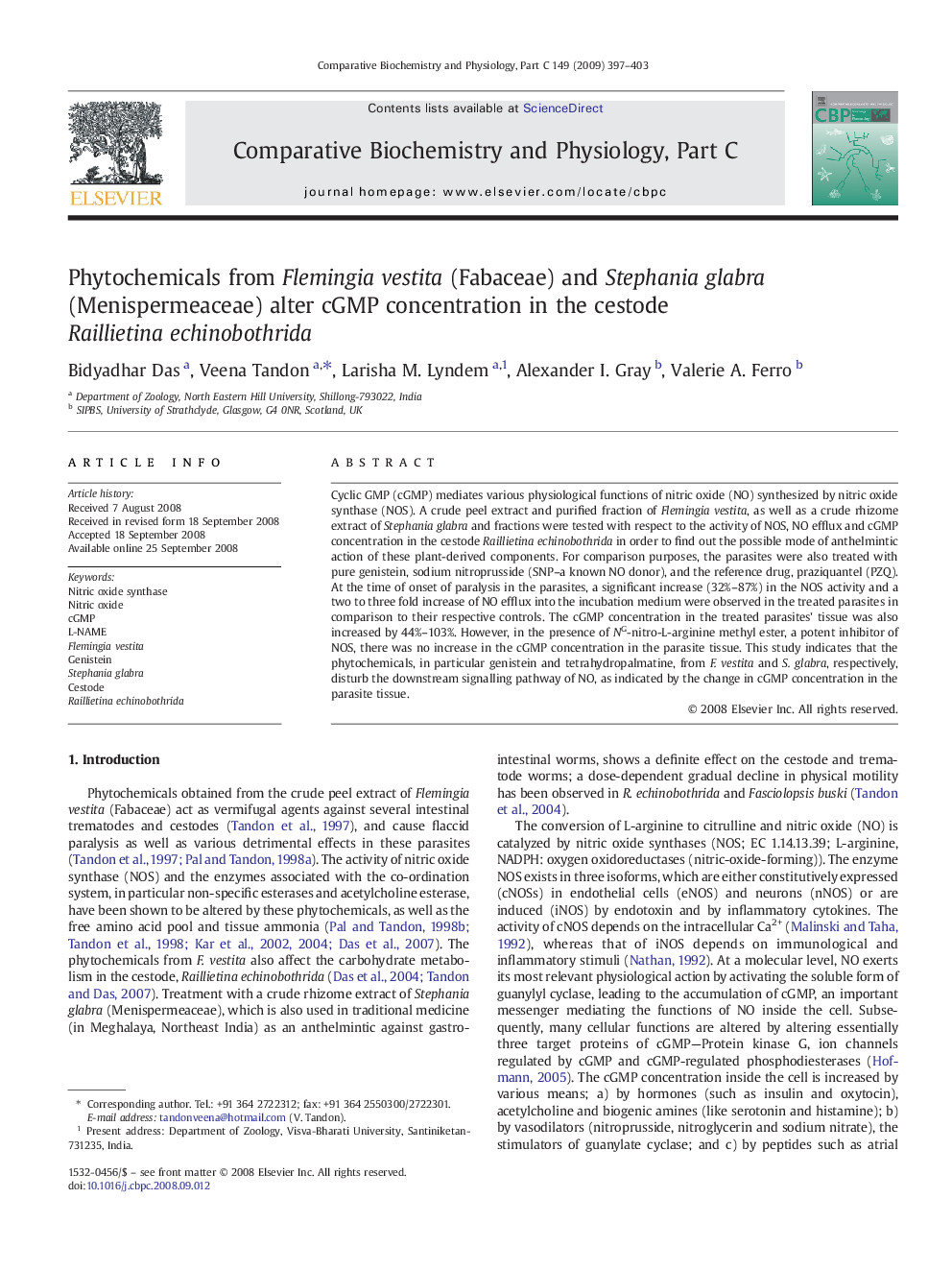| Article ID | Journal | Published Year | Pages | File Type |
|---|---|---|---|---|
| 1977974 | Comparative Biochemistry and Physiology Part C: Toxicology & Pharmacology | 2009 | 7 Pages |
Cyclic GMP (cGMP) mediates various physiological functions of nitric oxide (NO) synthesized by nitric oxide synthase (NOS). A crude peel extract and purified fraction of Flemingia vestita, as well as a crude rhizome extract of Stephania glabra and fractions were tested with respect to the activity of NOS, NO efflux and cGMP concentration in the cestode Raillietina echinobothrida in order to find out the possible mode of anthelmintic action of these plant-derived components. For comparison purposes, the parasites were also treated with pure genistein, sodium nitroprusside (SNP–a known NO donor), and the reference drug, praziquantel (PZQ). At the time of onset of paralysis in the parasites, a significant increase (32%–87%) in the NOS activity and a two to three fold increase of NO efflux into the incubation medium were observed in the treated parasites in comparison to their respective controls. The cGMP concentration in the treated parasites' tissue was also increased by 44%–103%. However, in the presence of NG-nitro-L-arginine methyl ester, a potent inhibitor of NOS, there was no increase in the cGMP concentration in the parasite tissue. This study indicates that the phytochemicals, in particular genistein and tetrahydropalmatine, from F. vestita and S. glabra, respectively, disturb the downstream signalling pathway of NO, as indicated by the change in cGMP concentration in the parasite tissue.
